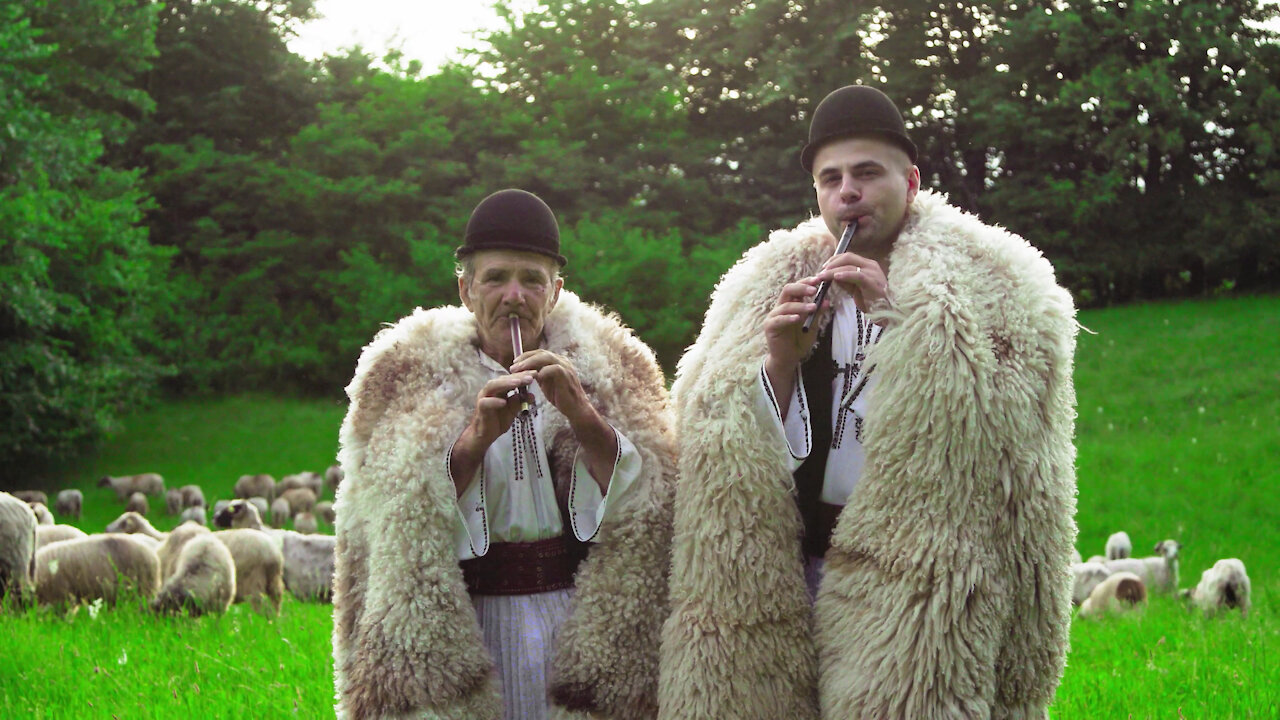Premium Only Content

Jiana de la Polovragi - Fluierașii Nicolae Sanda (Nea Culiță) și Dan Panu-Misailescu
Viețile și Cântecele Străbunilor noștri Ciobani - Interviu cu Nicolae Sanda și Dan Panu-Misailescu
https://youtu.be/sdQ5tRFhGw0
Cânt la fluierul "Celtic Winds" din fibră de carbon în DO https://carbony.com/product/carbony-high-whistle-in-c/
Videoclipul în limba Engleză: The Jiana Traditional Whistle Tune from Polovragi, Romania - Nicolae Sanda feat. Dan Panu-Misailescu https://youtu.be/voLzOUeLxHQ
„Istoria își bate joc de cei care nu o cunosc, repetându-se.” Nicolae Iorga - "History mocks those who don't know it by repeating itself. / History ridicules those who ignore it by repeating itself."
We Romanians also have Celtic heritage! Celts lived in many regions of Romania. For example "Galati" town and county name in Romania comes from the Gals (Celts) that lived there. In "Transilvania" or "Maramureș" areas we also had many Celts who left beautiful traces in our culture, for example in the traditional Romanian Tartan textile motifs of alternative black and white squares with lines, very similar to the Scottish ones, or in our traditional music, the whistle playing tradition, we have many very old Celtic crosses throughout Romana! In "Apuseni" mountains lived many Celts as well, and this can also be seen in the fact that men in that area had long braided hair and still "diddle/lilt" songs like the Irish to this day! Search for "The Revolt of Horea, Closca and Crisan 1784" for example and you can see from their pictures that they had a Celtic hairstyle. These are only a few examples. There are many more!
Just like one has 4 grandparents, the Romanian people has 4 ancestors: the Romans, the Thracians-Illyrians, the Celts, and the Scythians-Sarmatians.
About the Celts
"Their tribes and groups eventually ranged from the British Isles and northern Spain to as far east as Transylvania, the Black Sea coasts, and Galatia in Anatolia and were in part absorbed into the Roman Empire as Britons, Gauls, Boii, Galatians, and Celtiberians."
https://www.britannica.com/topic/Celt-people
A Brief History of the Irish Orthodox Church
http://orthodoxinfo.com/general/irishorthodoxchurch.aspx
ORTHODOX IRELAND
https://orthochristian.com/52572.html
"Scythia Minor or Lesser Scythia (Greek: Μικρά Σκυθία, romanized: Mikra Skythia) was a Roman province in late antiquity, corresponding to the lands between the Danube and the Black Sea, today's Dobruja divided between Romania and Bulgaria. It was detached from Moesia Inferior by the Emperor Diocletian to form a separate province sometime between 286 and 293 AD. The capital of province was Tomis (today Constanța)."
https://dbpedia.org/page/Scythia_Minor
About the Scythians
https://www.britannica.com/topic/Scythian
About the Sarmatians
https://www.britannica.com/topic/Sarmatian
"Like the Scythians to whom they were closely related, the Sarmatians were highly developed in horsemanship and warfare. "
[...]
"When the Sarmatians penetrated into southeastern Europe, they were already accomplished horsemen. They were nomadic, devoting themselves to hunting and to pastoral occupations."
Illyrians and Thracians
https://www.britannica.com/place/Balkans#ref476014
The Roman Empire - Imperiul Roman - Imperium Romanum - Romania - Romanland - Terra Romanorum - The Land of The Romans
"Byzantine civilization is not a term that the Byzantines themselves used for their civilization"
[...] "German humanist Hieronymus Wolf [...] invented the terminology for Byzantium and Byzantine in the sixteenth century." [...] "The Byzantines regarded themselves as Romans."
[...]
"The term "Romania" refers to a Byzantine world associated with the civilization that is not precisely coterminous with the empire's frontiers. It includes areas that lay within the cultural influence or thought-world, but not necessarily the political or military control, of the Byzantine imperial authorities. "
https://www.encyclopedia.com/religion/encyclopedias-almanacs-transcripts-and-maps/byzantine-civilization
Transcrierea scurtului fragment din interviul de la sfârșitul videoclipului
Polovragi, județul Gorj, România - 18 iunie 2019
Nicolae Sanda (Nea Culiță) - 80 de ani
Dan Panu-Misailescu - 33 de ani
DAN: Și el mergea în fruntea turmei și cânta din fluier.
NICOLAE: Da, dar era în vârstă, era bătrân.
DAN: Și oile mergeau după el.
NICOLAE: Da, păi așa se merge, unul merge înainte, altul în urma oilor.
Și cam asta ar fi povestea.
DAN: Foarte frumos!
NICOLAE: Ce să mai!
DAN: Și dumneavoastră m-ați învățat jiana asta după 50 de ani.
NICOLAE: Da, cam 50 de ani.
DAN: Vă mulțumesc, e foarte frumoasă!
The Christian Orthodox Church in America https://www.oca.org/questions
Email: plaiulnou@gmail.com
#cântec #fluier #Romania #PlaiulNou
-
 11:02:48
11:02:48
Amy100
3 years agoNicolae Full length audio book
379 -
 0:57
0:57
Diva999
3 years ago $0.02 earnedDan dan noodles
58 -
 9:30
9:30
One America News Network
3 years agoReal America - Dan W/ Dan Rodimer
1.11K15 -
 10:55
10:55
One America News Network
3 years agoReal America - Dan W/ Dan Crenshaw
3.51K47 -
 0:05
0:05
itssunshine1155
3 years agoDanny Dan Dan
18 -
 4:54
4:54
ronniedean
3 years agoDan Weber
24 -
 12:56
12:56
One America News Network
4 years agoDan Ball W/ Dan Crenshaw
2.85K9 -
 6:34
6:34
One America News Network
3 years agoDan Ball W/ Dan Crenshaw - Feb.17th
4.76K49 -
 11:46
11:46
One America News Network
3 years agoDan Ball W/ Dan Crenshaw - Jan. 28th
4.85K57 -
 1:23:41
1:23:41
Game On!
1 day ago $14.11 earnedNetflix NFL Christmas Games Preview and Predictions!
102K13